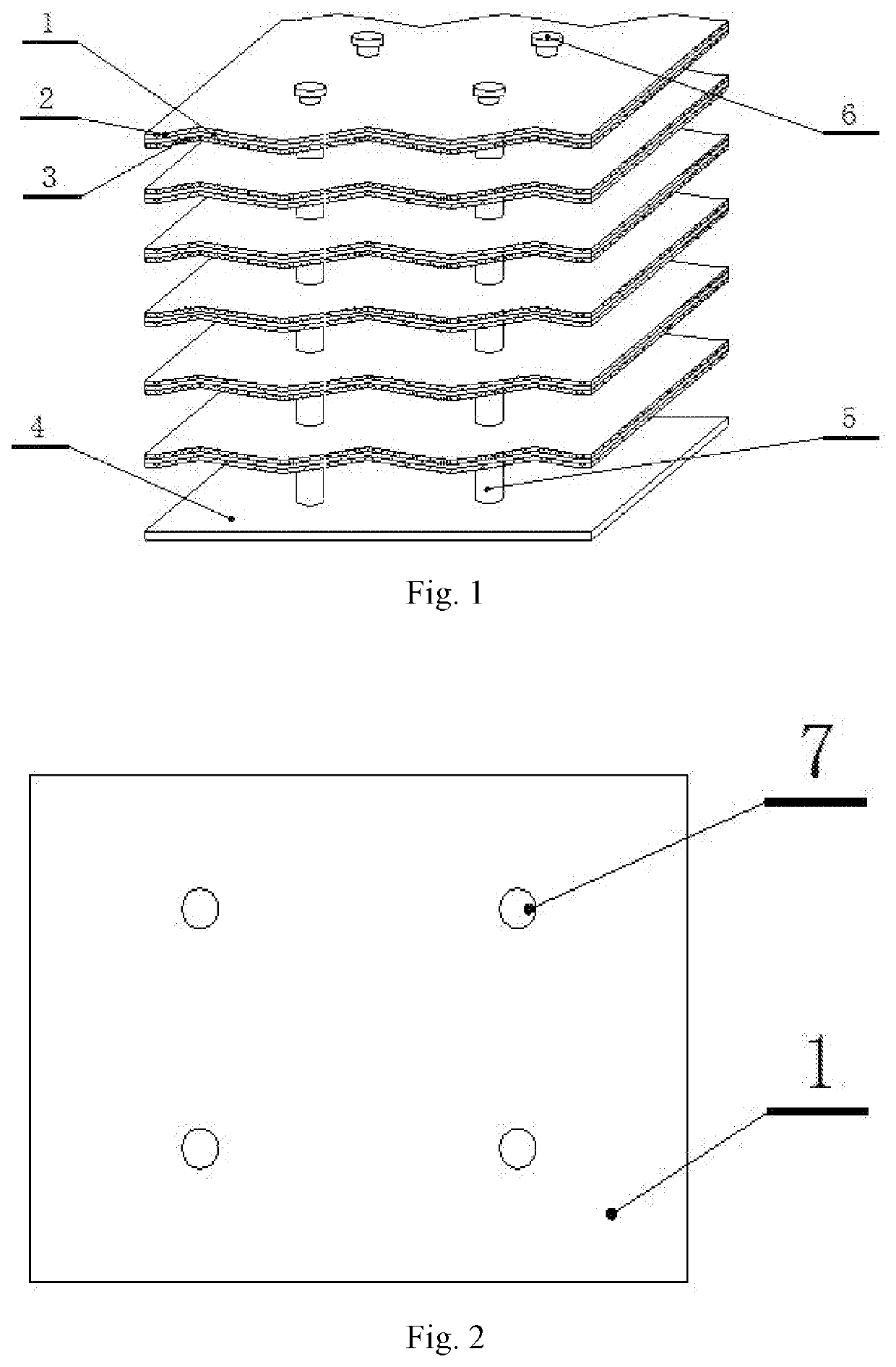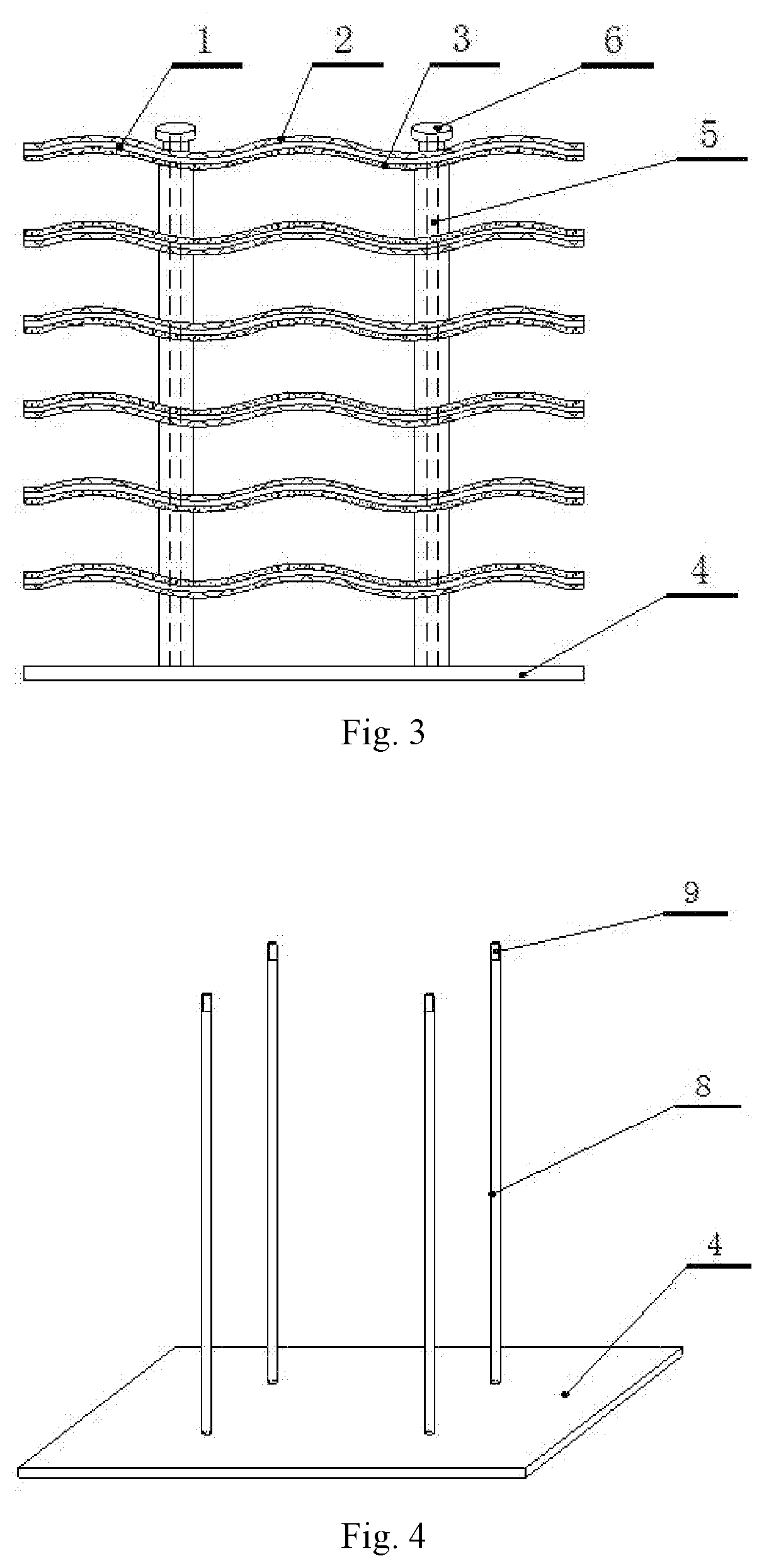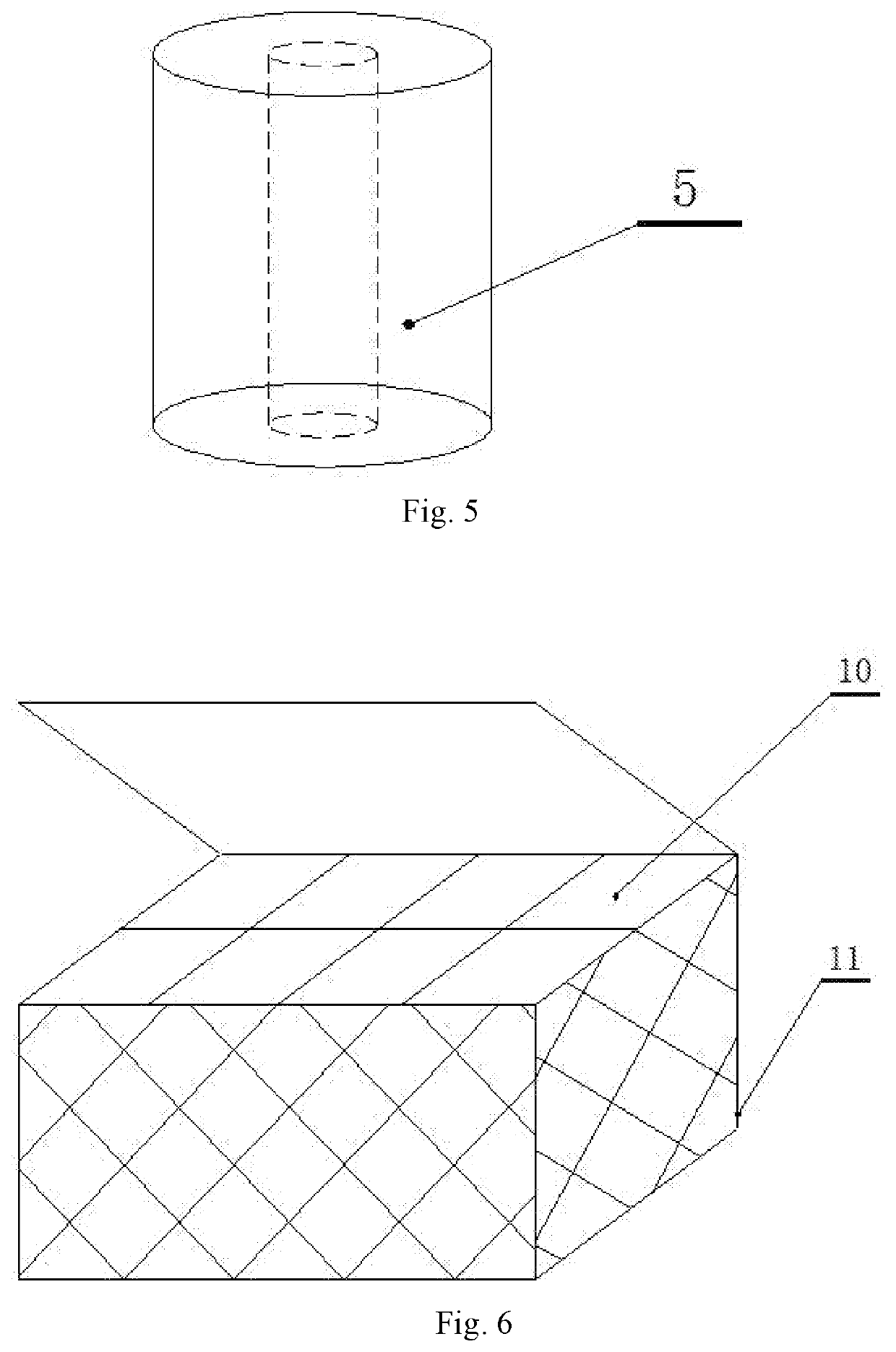Nanometer photocatalyst-microbe composite multilayer light transmission combination carrier
a composite and light-transmitting technology, applied in the direction of biological water/sewage treatment, water treatment compounds, sustainable biological treatment, etc., can solve the problems of water pollution, threatening the safety of water ecosystems and human health, and difficult recovery, so as to improve the efficiency of removing organic pollutants, easy to obtain, and simple preparation process
- Summary
- Abstract
- Description
- Claims
- Application Information
AI Technical Summary
Benefits of technology
Problems solved by technology
Method used
Image
Examples
example 1
[0048]Provided is a nano-photocatalyst-microorganism composite multilayered light-transmitting combination support, comprising: a plurality of wave-shaped plexiglass plates 1, a nanophotocatalyst-loading layer 2, a degrading bacteria-loading layer 3, a tandem rod holder 4, hollow elastic spacers 5, fixing screws 6, fixing holes 7, tandem rods 8, and thread interfaces 9; the plurality of wave-shaped plexiglass plates 1 are arranged in parallel and each wave-shaped plexiglass plate is provided with four fixing holes 7; the tandem rod holder 4 is provided with four tandem rods 8, which pass through the corresponding fixing holes 7 in each of the wave-shaped plexiglass plates 1 arranged in parallel, respectively; the tandem rod 8 between two adjacent wave-shaped plexiglass plates 1 passes through the hollow elastic spacers 5; each of the tandem rods 8 is connected to a fixing screw 6 at the top end; and each of the wave-shaped plexiglass plates 1 has different loading layers on the uppe...
example 2
[0062]Provided is a nanophotocatalyst-organic agricultural chemical-degrading bacteria composite multilayered light-transmitting combination support, wherein the nanophotocatalyst is anatase TiO2 nanoparticles, the organic agricultural chemical-degrading bacteria are organophosphorus agricultural chemical chlorpyrifos-degrading bacteria Sphingomonas sp. Dsp-2, and the multilayered light-transmitting combination support has wave-shaped plexiglass plates as loading substrates. The method of making the support particularly includes steps of:
[0063](1) hot press molding and surface roughening of plexiglass plate: a plexiglass plate with a length of 1.2 m, a width of 1.2 m and a thickness of 3 mm was hot pressed at 90° C. in a wave-shaped mold; the molded wave-shaped plexiglass plate was cut into square pieces with a length of 30 cm and a width of 30 cm, the upper and lower surfaces of the wave-shaped plexiglass plate 1 were roughened by sandblasting to have a surface roughness Rd of 1.6 ...
example 3
[0072]Provided is a nano-photocatalyst-microorganism composite multilayered light transmitting combination support, wherein the nanophotocatalyst is anatase TiO2 nanoparticles, the microorganism is a microbial population indigenous in water environment, and the multilayered light-transmitting combination support uses wave-shaped plexiglass as loading substrate. In the method of making the same, the steps such as hot press molding and surface roughening of plexiglass plate, nano-photocatalyst loading, assembly by stacking of multilayers of plexiglass plates and interlayer spacing adjustment and support securement were the same as those described in Example 1. For degrading bacteria loading, no specific degrading bacteria were loaded on either surface of the plexiglass plate in this example. Instead, 2% agar was uniformly applied successively for three times, with a layer thickness of 0.5 mm. After solidified at room temperature, the steps of assembly by stacking, interlayer spacing a...
PUM
| Property | Measurement | Unit |
|---|---|---|
| temperature | aaaaa | aaaaa |
| width | aaaaa | aaaaa |
| length | aaaaa | aaaaa |
Abstract
Description
Claims
Application Information
 Login to View More
Login to View More - R&D
- Intellectual Property
- Life Sciences
- Materials
- Tech Scout
- Unparalleled Data Quality
- Higher Quality Content
- 60% Fewer Hallucinations
Browse by: Latest US Patents, China's latest patents, Technical Efficacy Thesaurus, Application Domain, Technology Topic, Popular Technical Reports.
© 2025 PatSnap. All rights reserved.Legal|Privacy policy|Modern Slavery Act Transparency Statement|Sitemap|About US| Contact US: help@patsnap.com



